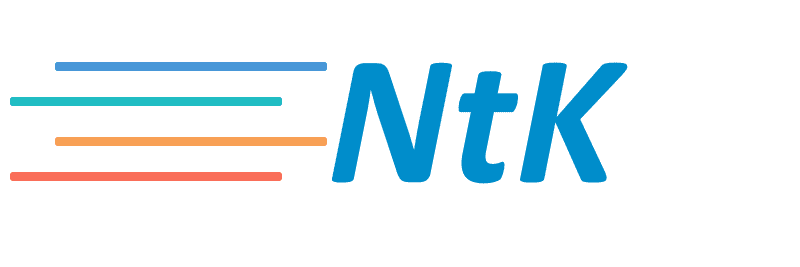
Targeting Your Market
What is a target market?
“Target Market” refers to the audience or customers you’re looking to reach and tell about your business, service or product. To get the best from your marketing, you really need to ensure you’re targeting your ideal audience and customers. You will often hear people refer to “market segmentation” or “customer profiling” which refers to the same principles as targeting your market. Ideally you will break down your market or audience into more and more detail, until you hit the target with your ideal profile of ideal customers.
Why do I need a target market?
Too often businesses get asked “who is your target market?” and the answer usually is “anyone and everyone”. That sounds great, and it could be true. However, even with the most generic of products you cannot please all the people, all of the time. This is never more true than with marketing.
The more specific you are with your marketing, the more likely you are to get conversions from effort and expenditure. In simple terms the more you understand your customer, understand their needs and desires, the more likely you are to get them to purchase from you.
You can ensure you tailor your customers journey throughout your brand, be it on:
- Your website;
- social media;
- printed media;
- or even through emails or phone calls.
This can be achieved through meeting their needs and desires.
(See our pages on Understanding ROI and Sales to learn more on how to measure returns on your investments).
What benefits do I get from targeting my market?
By researching your target market, you can truly understand your client and build your sales, marketing processes and messaging to match. From this you’ll need to understand:
- Where to find your target market (on and offline).
- How they purchase – how long does it take, do they watch video reviews, do they like to use the phone?
- What barriers are there to making a purchase – do they worry about costs, delivery, choice or exclusivity?
- Who else could they purchase from? – who are your competitors in this target market?
- Is there a niche market for your product or service you weren’t aware of?
This will help you put together a strategy for creating the best user journey, for your ideal client. The more specific and tailored your customers journey is to them, the more loyal and invested in your brand and product your ideal client will become.
Think about a brand you love, say your favourite chocolate bar. If that chocolate is a little more expensive, but it’s brand is desirable and appeals to your personality (it’s fair trade and organic), and gets delivered in 24 hours, wouldn’t you love to send it as a present to your friends to try?
If a brand knows all this information about you, and makes sure they state their values clearly, make it easy for you to purchase and send, and display it in a lovely gift box with a personalised message for loved ones, is anything going to stop you buying it? Didn’t think so 😉.
How do I target my market?
You can break down your market by any number of segments (or categories or types) but overall there are four main types of segmentation:
- Geographics – this covers geographical areas by locations such as counties, countries, boroughs, cities, postcode areas etc.
- Demographics – this covers age, gender, race, religion, job, martial status etc.
- Psychographics – this covers more emotional and mental status such as values, beliefs, personalities, lifestyle, interests etc.
- Behavioural – covering behaviors such as spending, brand interactions, potential and existing customer reactions to marketing.
All of the above can be segmented further and further; the idea is to use this information to create a customer “persona” or “profile” from all this data, that you can then market to successfully. So for example, with the chocolate bar we discussed, a potential customer may look like this:
- Female.
- Aged 40.
- Chocolate lover, but keen on quality products, unique.
- Likes a luxurious feel.
- Likes to send gifts to loved ones.
- Likes easy purchase process.
- Likes reliability.
- Doesn’t mind paying a little extra for quality.
- Values socially and environmentally responsible trade products.
This type of information will help you be much more specific with key messages and the way you structure your marketing strategy. This will incorporate not just the user journey but also your advertising, your website, your social media, content and PR.
If you would like to discuss how to research your target market, create a client persona or profile, or how to adjust your messaging or strategy, free of charge get in touch here.
What else do I need to know?
Everybody’s unique in one way or another, however a lot of us don’t realise we share very similar traits with lots of other people. The great thing in business, is this creates opportunities to market and sell to people with specific interests and needs in mind.
Yes, some brands do appear to be targeting larger groups of people; think car brands, mobile phones and the personal computer market. However, look closer; if this was the case, why do we have high end brands like Mercedes, instead of Ford and why do we have Samsung mobiles and Apple iphones. It may not appear like it as first but even the adverts you see on TV are appealing to particular groups. If not, why do we sit up and take notice when something we are interested in appears?
At Need to Know Marketing we love providing information for SME’s so they can grow. We also understand this work can be time consuming and difficult to begin with. To assist you, we provide a free of charge one hour consultation, where we have an open discussion about your business objectives and what you’re looking to achieve.
Following the consultation we will provide you with a marketing strategy, advising how we recommend meeting your business objectives through marketing. If you are interested in knowing the cost of our services, you can use our calculator as a guide.
“Of all of our inventions for mass communication, pictures still speak the most universally understood language.”
Walt Disney knew telling a story is always always easier with pictures. It crosses all barriers. The best story tellers are always the best at engaging their audience.


